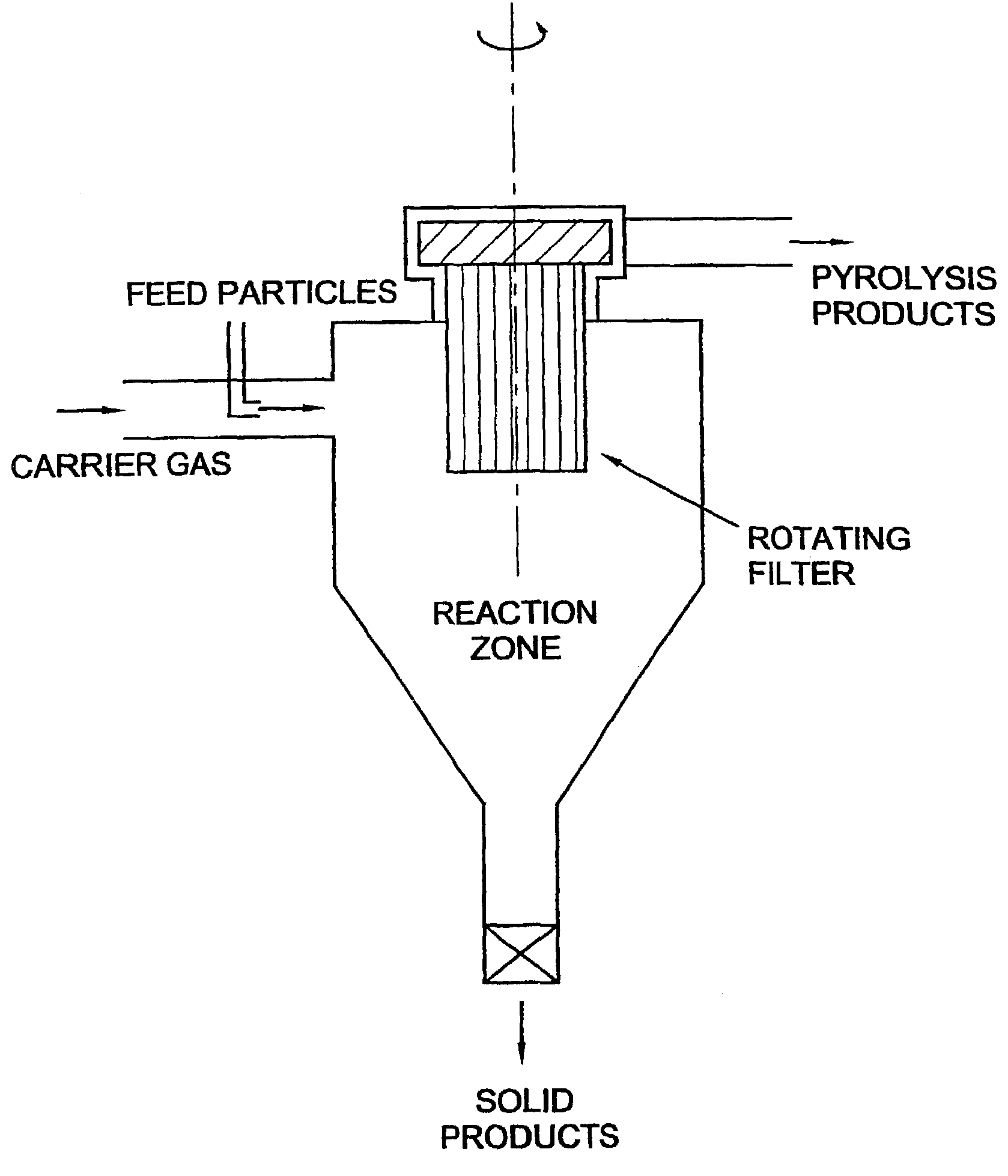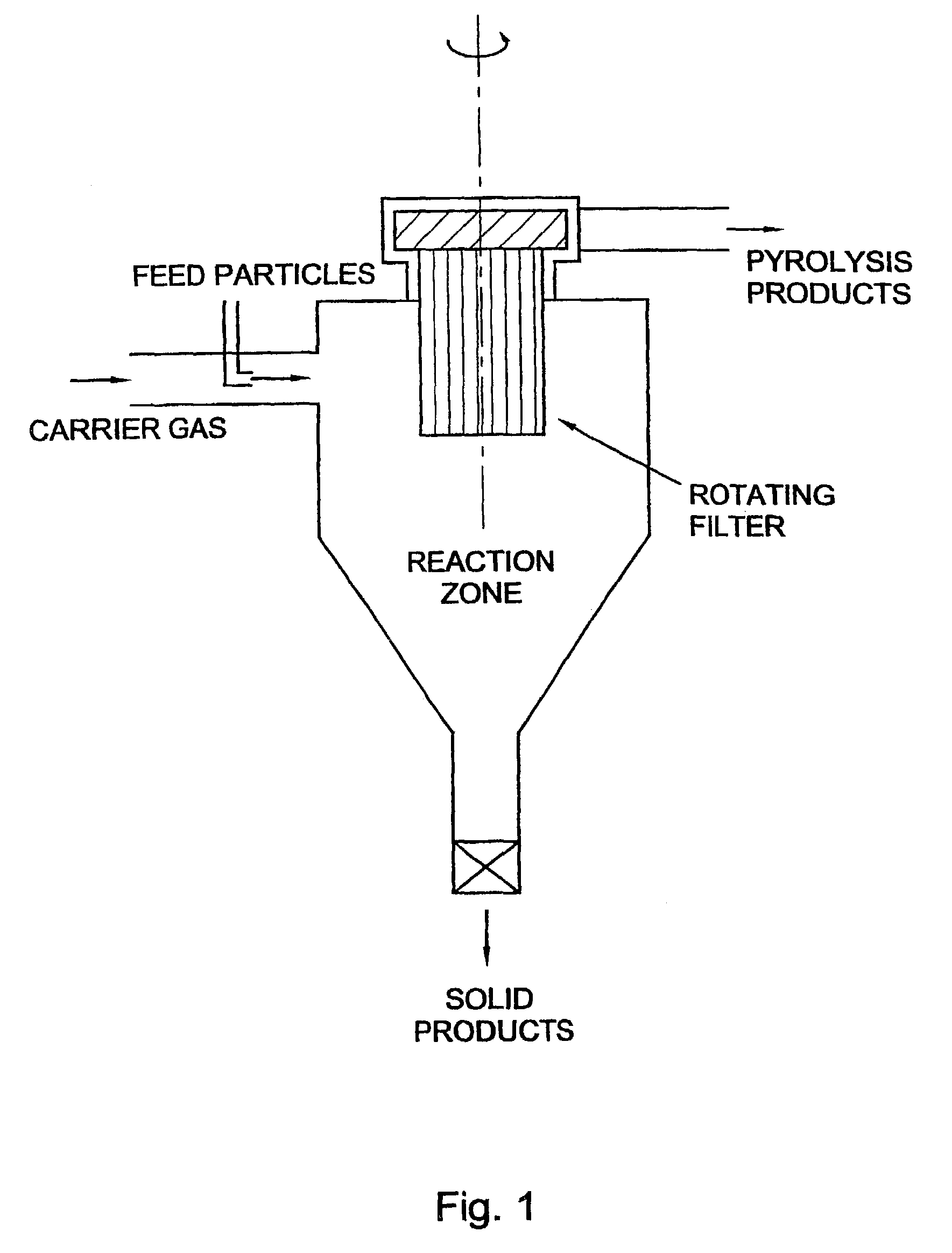Flash-pyrolysis in a cyclone
a cyclone reactor and flash technology, applied in the field of flash pyrolysis in a cyclone reactor, can solve the problems of excessive cracking, unsatisfactory quality of products obtained by processes employing a long pyrolysis time, and relatively long pyrolysis tim
- Summary
- Abstract
- Description
- Claims
- Application Information
AI Technical Summary
Benefits of technology
Problems solved by technology
Method used
Image
Examples
example 1
[0047]A 5 kW PYROS-reactor was built in accordance with the process of the invention. Wood particles of an average size of 0.5 mm were used as a feed. 50–60 wt-% of the feed was converted into oil. During the experiments the fast pyrolysis temperature was varied between 480 and 550° C.
[0048]The quality of the oil was analyzed. The oil produced in the PYROS-reactor had the following properties:
[0049]
heating value:14.8 MJ / kgmoisture content:30.9 wt-%density (25° C.):1.2 g / ccpH:2viscosity at 40° C.:14.63 mm2 / s
example 2
[0050]A technical feasibility study was carried out for the fast pyrolysis of electronics residues. The fast pyrolysis process was carried out at about 500–550° C. The product streams of the thermal process comprised about 35% oil, and 40% ferro-metals and 12.5% non-ferro-metals. The oil could be used for energy production purposes while the metals could be re-used. The rest of the products consists of non-condensable gas and a carbon fraction (char). Both streams could (partly) be used for the internal energy demand of the endothermic fast pyrolysis process.
PUM
| Property | Measurement | Unit |
|---|---|---|
| Temperature | aaaaa | aaaaa |
| Temperature | aaaaa | aaaaa |
| Temperature | aaaaa | aaaaa |
Abstract
Description
Claims
Application Information
 Login to View More
Login to View More - R&D
- Intellectual Property
- Life Sciences
- Materials
- Tech Scout
- Unparalleled Data Quality
- Higher Quality Content
- 60% Fewer Hallucinations
Browse by: Latest US Patents, China's latest patents, Technical Efficacy Thesaurus, Application Domain, Technology Topic, Popular Technical Reports.
© 2025 PatSnap. All rights reserved.Legal|Privacy policy|Modern Slavery Act Transparency Statement|Sitemap|About US| Contact US: help@patsnap.com



